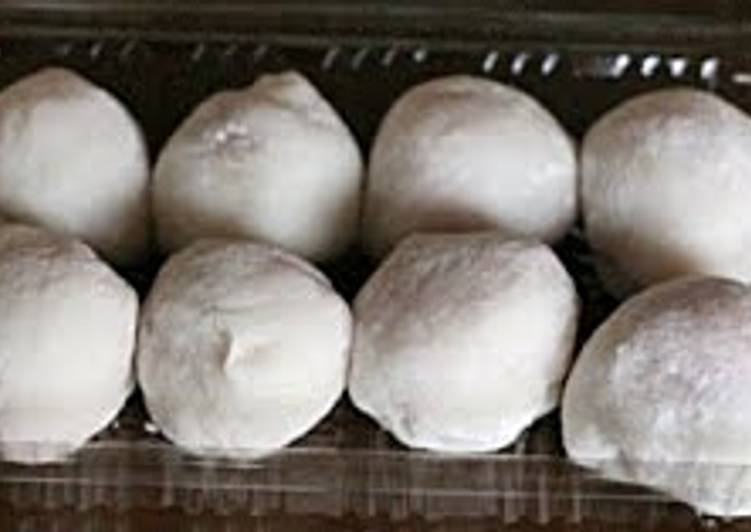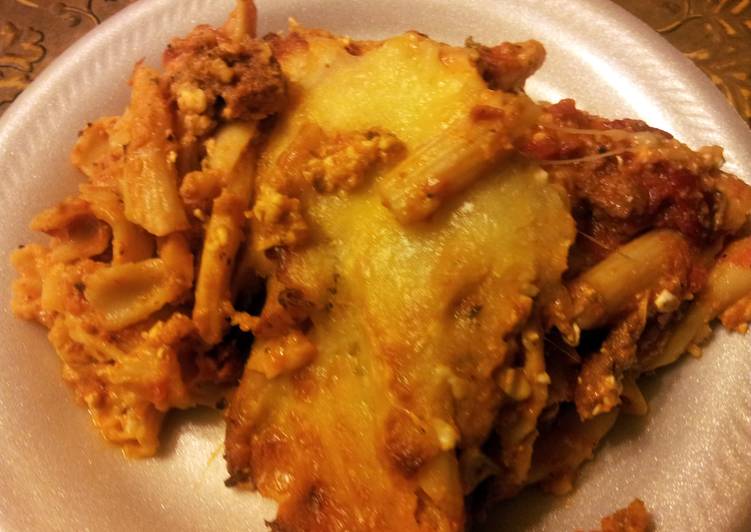
Hello everybody, I hope you’re having an incredible day today. Today, we’re going to make a special dish, easy microwave recipe - strawberry daifuku. One of my favorites. This time, I am going to make it a little bit unique. This will be really delicious.
Easy Microwave Recipe - Strawberry Daifuku is one of the most popular of current trending foods on earth. It’s appreciated by millions every day. It is simple, it is fast, it tastes delicious. Easy Microwave Recipe - Strawberry Daifuku is something that I’ve loved my entire life. They’re nice and they look wonderful.
To get started with this recipe, we must first prepare a few ingredients. You can cook easy microwave recipe - strawberry daifuku using 6 ingredients and 13 steps. Here is how you can achieve it.
The ingredients needed to make Easy Microwave Recipe - Strawberry Daifuku:
- Take or 150 grams Shiratamako
- Make ready or 50-60 grams Sugar (adjust the amount depending on the sweetness of the bean paste)
- Make ready or 225-235 ml Water
- Get enough for 15-25 grams per daifuku Sweet bean paste (Seefor Shiro An)
- Get ones Strawberries
- Take reasonable amount for lightly coating the daifuku Katakuriko (for dusting the mochi skins)
Instructions to make Easy Microwave Recipe - Strawberry Daifuku:
- Measure the shiratama-ko and sugar directly into a heatproof bowl, add water, lightly mix, and set aside.
- While the shiratama-ko mixture is resting, hull the strawberries. Take care not to damage them. Wash and pat dry.
- Coat the strawberries with a layer of the sweet bean paste. I usually just put about half of the sweet bean paste that I'll use onto each strawberry. (I put the other half on when I wrap the strawberries with the mochi skins.)
- Using a wooden spatula, mix the ingredients well in the bowl in Step 1, and microwave uncovered in a 600 watt microwave for 4 minutes, removing once after 2 minutes to mix well again. The photo shows how the mixture looks when you pull it out at 2 minutes.
- When you're only using 120 g of shiratamako, microwave the mixture for 3 minutes, pausing to mix after 1.5 minutes.
- When you mix the watery spots well with the spots that are becoming more mochi-like, you'll get a consistency like this (see photo). Put the mixture back in the microwave for the remaining 2 minutes.
- When the batter has changed from white to a translucent appearance, it's ready. But, depending on your microwave it may take a little more or less time. So, mix the batter well, and if it's still white, microwave for 20 more seconds.
- Dust a tray or other surface with katakuriko, and pour out the contents of Step 7 on top. Dust the top of the mochi dough with katakuriko, and cut the dough into 16 equal pieces.
- Flatten out each piece one by one, but leave the middle of each thick and unflattened. Pick up with both your hands, using your index and thumb and stretch.
- When you've flattened the dough into 5-6 cm circles, set the strawberries from Step 3 on top and wrap the mochi around the strawberries. This is the point when I add the other half of the sweet bean paste, using the back of a round spoon or similar tool to spread the paste thinly onto the surface of the mochi.
- Place the strawberries with the other half of the sweet bean paste, bean-paste-side up on the mochi, and spread the bean paste over the strawberry as you wrap it in the mochi.
- If you don't finish wrapping the strawberries while the mochi dough is still warm, the seam won't stick together well, so work quickly.
- Your preference will vary, but I think these are very good when the proportions are at about 3 mm for the layer of sweet bean paste, and 8 mm for the mochi skin, or at least no thicker than 1 cm.
So that’s going to wrap this up for this special food easy microwave recipe - strawberry daifuku recipe. Thanks so much for reading. I am confident that you can make this at home. There is gonna be interesting food in home recipes coming up. Remember to save this page in your browser, and share it to your family, colleague and friends. Thank you for reading. Go on get cooking!

